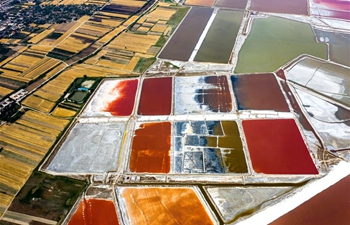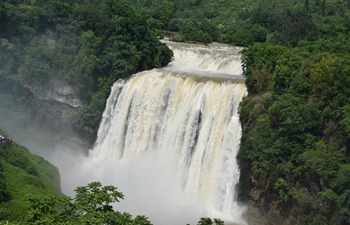WASHINGTON, June 12 (Xinhua) -- Scientists in China and the United States have developed a way that uses satellites to track the luminous plankton responsible for producing "blue tears" in China's coastal waters.
They found that those glittering creatures have become more abundant in recent years, according to a study published on Wednesday in the journal Geophysical Research Letters.
"Noctiluca scintillans," or sea sparkles, are single-celled organisms found in coastal waters all over the world, especially on China's shores. They can glow a dazzling blue light at night when disturbed by swimmers, waves or passing boats. Although they can create a scenic splendor, they are one form of red tides that can harm marine life.
Making use of the organism's unique ability to absorb and scatter light, the researchers from Sun Yat-sen University, University of South Florida and other institutions worked to identify the unique colors of sea sparkles between April and August, after analyzing nearly 1,000 images of the East China Sea taken by instruments on NASA's satellites and the International Space Station from 2000 to 2017.
They found many blooms located farther from the coast than previously observed by ships. Some blooms were more than 300 km offshore, and some blooms resided in waters as warm as 28 degrees Celsius, warmer than the species' usual survival range of 20 to 25 degrees Celsius, according to the study.
Also, the researchers found that the blooms were increasing in recent years, especially between 2013 and 2017. In 2017, there was a prolonged bloom that lasted from mid-April to mid-July.
The increase could be a result of excess nutrients entering the water from increased fertilizer use, among other factors, according to the researchers.
To track sea sparkles from space instead of ship could help researchers build a more complete picture and thus better understand the harmful red tides while boosting tourism on China's east coast, according to the researchers.













